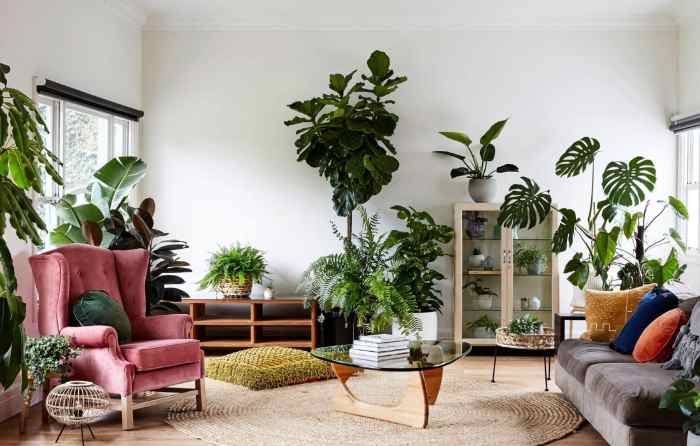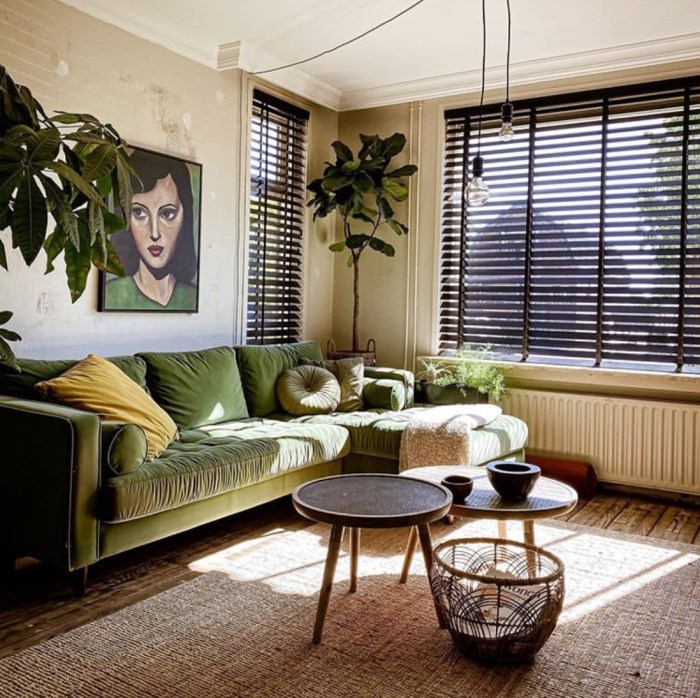How to decorate a room with plants – Plants have long been used to bring life and vibrancy to indoor spaces, but they can also serve as a stylish and cost-effective way to decorate a room. Whether you have a green thumb or struggle to keep even the hardiest of plants alive, there are many ways to incorporate greenery into your home decor. In this article, we will explore tips and tricks for decorating a room with plants, from choosing the right plants to arranging them in a visually appealing way.
Choosing the Right Plants
When it comes to decorating a room with plants, it’s important to choose the right plants for the space. Consider the amount of natural light the room receives, as well as the temperature and humidity levels. Some plants thrive in bright, sunny spaces, while others prefer low-light conditions. Additionally, consider the size of the plants and how much space they will need to grow.
Just like painting a blue room, decorating it requires careful planning and attention to detail. Consider incorporating different shades of blue to create a sense of calm and tranquility. Add accents of white or gold to enhance the overall aesthetic. Hang artwork or decor that inspires peace and serenity. For more tips on how to decorate a blue room, check out this how to decorate a blue room guide.
If you’re short on space, opt for smaller plants that can be placed on shelves or tables.
Arranging Your Plants
Once you’ve selected the perfect plants for your space, it’s time to arrange them in a way that is visually appealing. Consider grouping plants of varying heights and textures together to create a dynamic display. You can also use plant stands or hanging planters to add dimension to the room. Don’t be afraid to get creative with your plant arrangements – experiment with different combinations until you find a look that you love.
Caring for Your Plants: How To Decorate A Room With Plants

Proper care is essential to keeping your plants healthy and thriving. Make sure to water your plants regularly, but be careful not to overwater them. Most plants prefer to dry out slightly between waterings, so be sure to check the soil moisture before watering. Additionally, make sure to provide your plants with the right amount of sunlight and humidity. If you notice any signs of pest infestation or disease, take action immediately to prevent further damage.
The Benefits of Decorating with Plants
Decorating a room with plants offers numerous benefits beyond just aesthetics. Plants have been shown to improve air quality by removing toxins from the air and releasing oxygen. They can also help to reduce stress and anxiety, making your home a more peaceful and relaxing place to be. In addition, caring for plants can be a rewarding hobby that provides a sense of accomplishment and satisfaction.
Conclusion
Decorating a room with plants is a fun and rewarding way to add beauty and greenery to your home. By choosing the right plants, arranging them thoughtfully, and providing proper care, you can create a space that is both visually stunning and beneficial to your health and well-being. So go ahead and bring a little bit of the outdoors inside – your plants will thank you!
FAQs
1. How can I tell if my plants are getting enough sunlight?
To determine if your plants are getting enough sunlight, check the leaves for signs of discoloration or wilting. If the leaves are turning yellow or brown, your plants may be getting too much sunlight. Conversely, if the leaves are pale or drooping, they may not be getting enough sunlight.
When it comes to decorating a blue room, it’s important to create a calming and peaceful atmosphere. Start by choosing the right shade of blue that resonates with you. Incorporate elements like white furniture or accents to balance the blue hues. Adding natural elements like plants can bring life to the space. For more tips on how to decorate a blue room, check out how to decorate a blue room.
2. What are some low-maintenance plants that are easy to care for?, How to decorate a room with plants
Some low-maintenance plants that are easy to care for include succulents, snake plants, pothos, and spider plants. These plants require minimal watering and can thrive in a variety of light conditions.
3. How often should I water my plants?

The frequency of watering your plants will depend on the type of plant, the size of the pot, and the environmental conditions. In general, most plants prefer to dry out slightly between waterings, so be sure to check the soil moisture before watering.
4. Can I use artificial plants to decorate a room?
While artificial plants can be a low-maintenance option for decorating a room, they do not offer the same benefits as live plants. Consider using a mix of real and artificial plants to achieve the desired look while still reaping the benefits of live greenery.
5. How can I prevent my plants from attracting pests?
To prevent pests from infesting your plants, make sure to keep them clean and free from debris. Inspect your plants regularly for signs of pests, such as yellowing leaves or webbing. If you do notice pests, take action immediately to prevent further damage.
